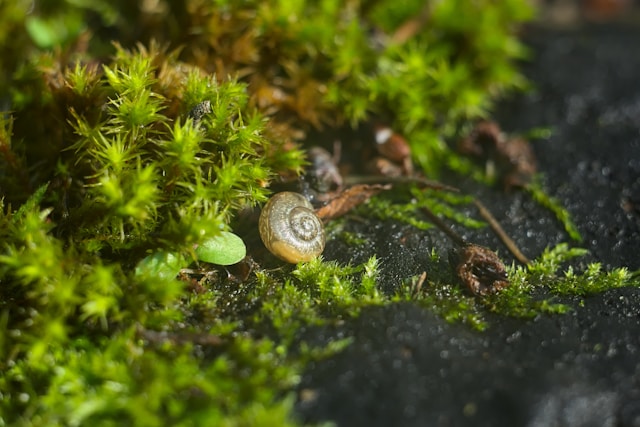While most of us focus on towering trees, sprawling savannahs, and breathtaking mountain ranges, a parallel universe teems with life beneath our feet. Hidden from sight yet crucial to the survival of ecosystems is the microscopic realm of soil ecology. This intricate world—populated by bacteria, fungi, nematodes, protozoa, and more—functions as the silent engine driving our planet’s fertility and biodiversity.
Soil ecology, in its essence, is the study of interactions between soil organisms and their environment. These unseen organisms are not just biological curiosities; they are responsible for the health of forests, the productivity of agricultural lands, and the quality of the air and water. By understanding this hidden biome, we unlock keys to climate resilience, food security, and environmental sustainability.
The Foundation of Life: What is Soil Ecology?
Soil ecology refers to the complex network of relationships among living organisms in the soil and how they interact with the physical and chemical components of their environment. It encompasses everything from nutrient cycling to organic matter decomposition, from water retention to disease suppression.
Soils are far from being just ‘dirt.’ They are dynamic systems that act as both a medium and a mechanism for life. Within a single gram of healthy soil, there can be more living organisms than there are people on Earth. These tiny inhabitants transform the soil into a living, breathing habitat that affects everything from plant growth to atmospheric carbon levels.
Soil ecologists study these dynamics using tools from microbiology, biochemistry, geology, and climatology. Through this multidisciplinary lens, they uncover the roles that organisms play in shaping soil structure, fertility, and resilience. Their findings are essential for everything from sustainable agriculture to habitat restoration.
The Invisible Workforce: Microorganisms in Soil
Among the key players in soil ecology are microorganisms, including bacteria, fungi, and archaea. These microscopic entities perform vital roles that directly influence plant growth and ecosystem health. Without them, nutrient cycling would grind to a halt, plant roots would struggle to access essential minerals, and organic matter would accumulate without decomposing.
Bacteria are among the most numerous and diverse organisms in soil. They break down organic compounds, fix atmospheric nitrogen, and detoxify pollutants. Fungi, particularly mycorrhizal fungi, form symbiotic relationships with plant roots, extending their reach and enhancing nutrient uptake. These fungal networks can span entire forest floors, acting like underground highways for nutrients and communication.
Archaea, though less studied, are equally crucial. Many of them thrive in extreme conditions and contribute to soil processes such as methanogenesis and ammonia oxidation. Collectively, these microorganisms serve as the biochemical engines of the soil, catalyzing reactions that make life above ground possible.
Soil Fauna: The Engineers Beneath Our Feet
Beyond microbes, soil is also inhabited by a diverse range of tiny animals, collectively known as soil fauna. These include nematodes, mites, springtails, and earthworms, among others. Each plays a unique role in shaping the structure and function of the soil.
Earthworms, often referred to as ecosystem engineers, are perhaps the most recognizable. They burrow through soil, aerating it and facilitating the infiltration of water and nutrients. Their castings are rich in organic matter and microbial life, enhancing soil fertility.
Nematodes, though often maligned for their role in plant disease, also include many beneficial species that feed on bacteria, fungi, and even other nematodes. These microscopic predators help regulate microbial populations and participate in nutrient mineralization. Likewise, arthropods like springtails and mites fragment organic matter, increasing its surface area for microbial decomposition.
Soil Structure: A Living Architecture
The physical structure of soil—its texture, porosity, and aggregation—is not just the result of geological processes but also of biological activity. Microorganisms and soil fauna actively engineer the soil environment, creating a porous and well-aggregated matrix that supports root growth, water infiltration, and gas exchange.
Fungi produce sticky proteins like glomalin, which help bind soil particles together into aggregates. Bacteria secrete extracellular polysaccharides that form biofilms, stabilizing soil structure. The tunnels and burrows of earthworms and insects improve aeration and promote the mixing of organic and mineral components.
Healthy soil structure is essential for preventing erosion, maintaining water availability, and supporting microbial habitats. Without the contributions of soil organisms, soils can become compacted, hydrophobic, or nutrient-depleted—conditions that reduce their productivity and increase vulnerability to environmental stress.
The Carbon Sink Beneath Us
Soil is one of the largest carbon sinks on Earth, storing more carbon than the atmosphere and all plant life combined. This makes it a vital component in the global carbon cycle and an important player in mitigating climate change.
Through a process known as carbon sequestration, soil organisms incorporate organic carbon from plant material into stable forms that can remain in the soil for decades or even centuries. Mycorrhizal fungi are especially important in this regard, as they promote carbon storage in root-associated zones.
Conversely, poor soil management—such as deforestation, overgrazing, and intensive tillage—can lead to the release of stored carbon, contributing to greenhouse gas emissions. Thus, promoting healthy soil ecology is not just an agricultural concern but a global imperative for climate resilience.
Nutrient Cycling and Soil Fertility

The availability of essential nutrients like nitrogen, phosphorus, and potassium is governed largely by biological processes in the soil. Microorganisms decompose organic matter, mineralize nutrients, and facilitate their uptake by plants.
Nitrogen fixation, carried out by symbiotic bacteria such as Rhizobium, transforms atmospheric nitrogen into a usable form for plants. Meanwhile, decomposers like actinomycetes break down complex organic molecules into simpler compounds that enrich the soil.
Phosphorus, often locked in insoluble forms, is made bioavailable through the action of phosphate-solubilizing bacteria and fungi. These biological processes create a self-sustaining system where nutrients are recycled and made accessible, reducing the need for synthetic fertilizers and enhancing long-term productivity.
The Role of Soil Ecology in Agriculture
Modern agriculture often underestimates the value of soil ecology, relying heavily on chemical inputs to drive crop production. However, a growing body of research underscores the benefits of managing soils as living systems.
Practices like crop rotation, cover cropping, composting, and reduced tillage promote a healthy soil microbiome. These strategies not only improve fertility but also enhance pest resistance, increase water retention, and reduce erosion. In essence, they work with nature rather than against it.
Soil health assessments now include biological indicators—such as microbial biomass, respiration rates, and enzyme activity—alongside traditional chemical metrics. This shift reflects a broader recognition that the future of food security depends on our stewardship of the microscopic world beneath us.
Soil and Water: An Intimate Relationship
Water movement through the soil is influenced by its biological structure. Pores created by roots and soil fauna serve as channels for water infiltration, reducing runoff and increasing retention. Organic matter, enriched by microbial activity, acts like a sponge, holding water for longer periods.
In drought-prone regions, healthy soil ecology can be the difference between crop failure and survival. Soils with high microbial diversity and organic content are more resilient to extremes of moisture, ensuring stable agricultural outputs even in challenging climates.
Moreover, healthy soils filter contaminants, preventing them from leaching into groundwater. Microorganisms break down pesticides, pharmaceuticals, and other pollutants, acting as a natural purification system that protects human and ecological health.
Soil Biodiversity and Ecosystem Resilience
Ecosystems with diverse soil communities tend to be more resilient to stress, disturbance, and invasion. Biodiversity in the soil acts as a buffer, ensuring that if one species or function is lost, others can take its place.
This functional redundancy is critical in the face of climate change, pollution, and land-use change. For example, a diverse community of nitrogen-fixing bacteria can maintain soil fertility even if some species decline due to temperature shifts.
In forest ecosystems, soil biodiversity influences plant community structure, disease dynamics, and carbon cycling. Conservation efforts increasingly include measures to protect soil biodiversity, recognizing its foundational role in maintaining ecosystem services.

